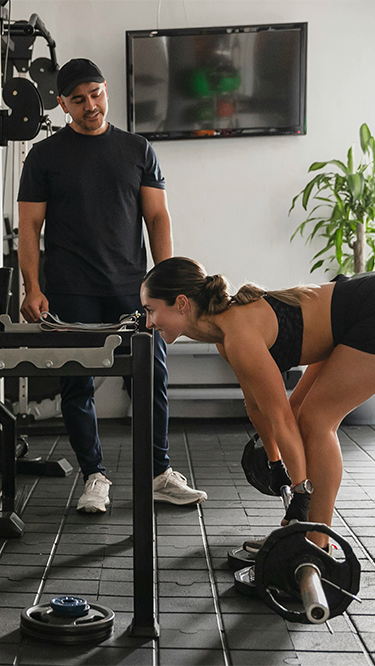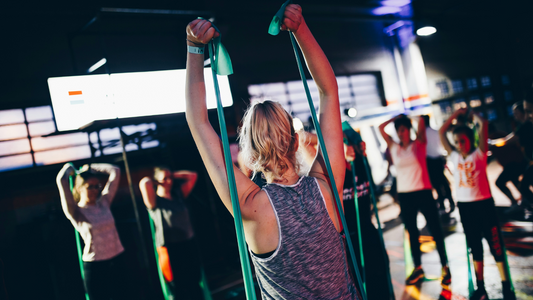

What Is an Exercise Regression?
Exercise has benefits for your mental and physical health, but when done incorrectly, it can cause injuries. Learning about certain modifications, such as what an exercise regression can do for your regular workout routine, can help you maintain form and avoid injury.
What Is an Exercise Regression?
An exercise regression is the act of modifying an exercise to make it easier. Some trainers or fitness instructors may refer to these as "modifications."
Why Are Exercise Regressions Important?
Exercisers have a wide range of body types, strengths, weaknesses, range of motion, and experience levels. An exercise that is easy for one person may cause an injury in another.
Regressions allow people to modify exercises so that they can safely and comfortably pursue their fitness goals. For example, anterior dominance, which means the muscles on the front of your body are stronger than the muscles on the back of your body, is common.
Anterior dominance can cause a hunched forward posture that makes properly executing exercises, such as deadlifts and squats, difficult. Regressing these exercises provides a way for exercisers to build the foundation they need to perform these workouts safely.
What Are the Benefits of Exercise Regression?
Exercise regression can be beneficial in several ways.
Allows Greater Workout Variety
You may think you can't do specific exercises because it is painful, or you lack the range of motion. Exercise regression makes it possible to include these exercises in your routine by finding an easier version that works for your body and fitness level.
Improves Exercise Adaptability
Have you ever arrived at the gym with a plan only to find that the equipment you wanted to use was not available? Knowing how to regress an exercise makes it easier to adapt your workout on the fly.
For example, say you planned to perform an exercise with 15-pound dumbells, but only the 25-pound dumbells are available. You could regress the exercise to a variation that you can perform while using the heavier weight instead of leaving that exercise out of your routine.
Prevents Injuries and Improves Performance
Poor form can cause injuries and degrade your exercise performance. For example, if you hunch over while riding a bike, you can't fill your lungs with air fully, which means your muscles don't get as many nutrients, causing them to perform less well and fatigue faster.
Poor technique can also lead to injuries, such as muscle and joint strains, torn ligaments, back and knee injuries, and soreness. Even if you know the proper technique for an exercise, attempting to perform an exercise that is too difficult for you can throw off your form. An exercise regression can help you maintain your form until you are ready to safely perform the more difficult version.
How Do You Regress an Exercise?
You can regress an exercise by modifying one or more of five variables.
Intensity or Load
If you are struggling with a strength exercise, reducing the amount of weight or resistance may help you maintain proper form. When performing exercises without any added resistance, try reducing the intensity, such as jogging on a flat surface instead of running up a hill.
Range of Motion
If you can't execute the full range of motion of an exercise without changing your form, you may need to find ways to modify the range of motion to suit your body and fitness level. If you are new to exercise, it can be helpful to work with a personal trainer or physical therapist to ensure you are maintaining proper form.
Height or Elevation
When exercises involve vertical movements, such as stepping up on a box or lifting a weight from the floor, changing the elevation of the starting or finishing position can make the exercise easier. An example of this type of exercise regression is lifting a dumbbell from a stand instead of from the floor.
Speed
When people are struggling with heavy weights, they are often tempted to use momentum to complete a repetition. Not only will you not get as much benefit from the exercise by doing this, but you could cause an injury. Slowing down your movement helps ensure you are fully engaging your muscles and maintaining correct form throughout the exercise.
Body Position
You can make many exercises easier by changing your body position. For example, if you have trouble doing push-ups, you can try them with your knees on the floor or perform them by leaning against a wall while standing.
What Are Some Examples of an Exercise Regression?
There are many ways you can regress different exercises. These are a few examples of some common exercise regressions.
Push-Ups
A traditional push-up involves placing your hands and toes on the floor. Potential regressions include starting with your hands on a bench instead of the floor or with your knees on the floor instead of your toes.
Pull-Ups
You can regress a pull-up by using an assisted pull-up machine to offload some of your body weight during the movement. Alternatively, you could use a lat pull-down machine to replicate the same movement pattern, but with an amount of weight you can adjust.
Gait Exercises
When performing gait exercises, such as the farmers carry, you can regress the movement by walking a shorter distance or using a lighter weight. For exercises that involve carrying a weight in each hand, you could switch to using a weight in just one hand.
How To Track Your Progress With Exercise Regressions
Now that you know what an exercise regression is, you need to learn how to track your progress. Traditionally, people track the results of their workouts by using a measuring tape to see how their muscle size is changing, stepping on the scale, or comparing photos. However, these methods can be difficult and inaccurate. The ZOZOFIT app tracks your progress and provides you with insights into how your workouts are impacting your overall shape.

![zf-w-[168px] zf-h-[40px]](http://zozofit.com/cdn/shop/t/15/assets/logo-desktop.png?v=117713855448369080381753069598)


